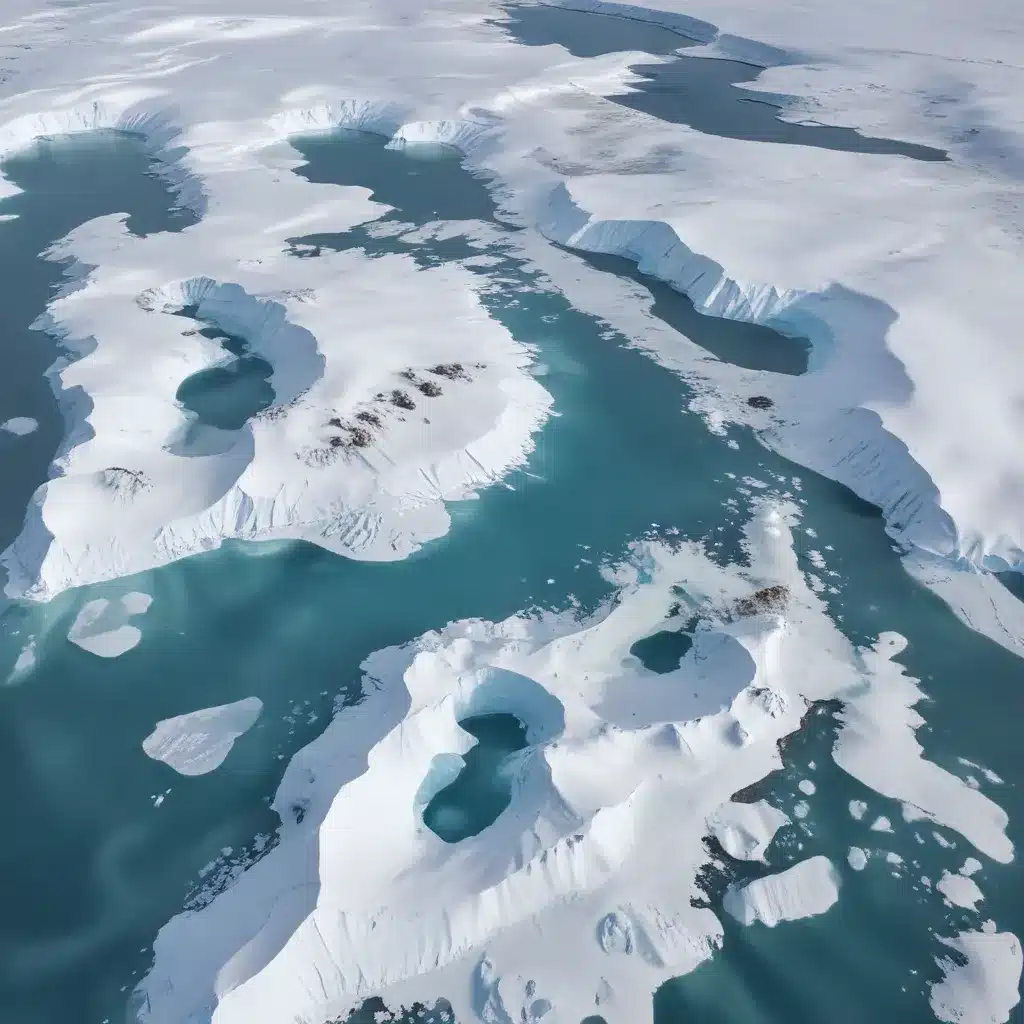
The Arctic’s Warming Threat and Methane Emissions
The Arctic is warming up to 4 times faster than the global average, leading to significant environmental changes. Given the sensitivity of natural methane (CH4) sources to environmental conditions, increasing Arctic temperatures are expected to lead to higher CH4 emissions, particularly due to permafrost thaw and the exposure of organic matter. Some estimates therefore assume the existence of an Arctic “methane bomb”, where vast CH4 quantities are suddenly and rapidly released over several years.
This study examines the ability of the in-situ observation network to detect such events in the Arctic, a generally poorly constrained region. Using the FLEXPART atmospheric transport model and varying CH4 emission scenarios, the researchers found that areas with a dense observation network could detect a methane bomb occurring within 2 to 10 years. In contrast, regions with sparse coverage would need 10 to 30 years, with potential false positives in other areas.
Mapping Arctic Methane Sources and Sinks
The Arctic region is not uniformly defined, making it challenging to compare estimates from various studies. Natural CH4 sources in the Arctic are generally dominated by high northern latitude wetlands, oceanic fluxes, forest fires, and geological sources. Anthropogenic CH4 emissions in the Arctic are relatively low compared to other regions, with some Arctic states even reporting decreases in future emissions.
However, the large estimates of unexplored fossil fuel resources make this region potentially attractive for future drilling campaigns, and it has been confirmed that drilling has increased over the past decades in Arctic-boreal regions. The magnitude and multiplicity of possible climate feedbacks related to Arctic CH4 natural emissions have been dramatically called a “sleeping giant”, a “methane time bomb”, or even the “methane apocalypse”.
Detecting the Methane Bomb with Atmospheric Observations
To implement this study, the researchers applied hypothetical trend scenarios on different CH4 emission sources to simulate a methane bomb in different regions located in high northern latitudes. By combining these emission scenarios with the extrapolated output of the FLEXPART atmospheric transport model, they obtained synthetic CH4 mixing ratios for the current observation network in the Arctic and sub-Arctic, as well as for an observation network extended by possible additional sites.
These synthetic observations subsequently served as input data for the inverse modeling setup to identify a temporal threshold of possible detection and to analyze regional differences in the ability of the two networks to adequately detect and localize increasing CH4 emissions. The researchers assumed optimal quality and availability of the measurement data, representing a best-case scenario for the detection of an Arctic methane bomb using exclusively in-situ observations.
Limitations of the Current Observation Network
The current observation network in the Arctic and sub-Arctic includes 40 stations, with the majority located in North America (Canada, USA, and Greenland). Ten observation sites are located in the Russian Arctic and sub-Arctic, and four sites in northern and western Europe.
The extended network expands the current network by 16 additional observation sites, with the majority located in northern Europe and a few in central/western Russia and Canada/Greenland. The researchers selected these sites based on their theoretical provision of CH4 observations, including measurements in the Russian Arctic that may currently not be accessible to the scientific communities of certain countries.
Quantifying the Detectability of Methane Emissions
The researchers found that areas with a dense observation network could detect a methane bomb occurring within 2 to 10 years. In contrast, regions with sparse coverage would need 10 to 30 years, with potential false positives in other areas.
When examining the true and posterior fluxes over time, the posterior emissions were found to be underestimated compared to the truth, particularly in regions with sparse observation networks. The inversion also attributed some of the increase in emissions to areas outside of the target region, indicating challenges in spatial attribution.
Further analysis showed that in most regions, even in the most favorable parts of the Arctic, an increase of a few up to 10 TgCH4/yr (corresponding to ~7% per year) is necessary for statistically reliable detection. Such detection thresholds are close to the expected emission increases in the coming decades, raising concerns about the limitations in detecting such events, especially in areas far from observation networks.
Improving Arctic Methane Monitoring
The results of this study highlight the challenges in reliably detecting and localizing potential increases in Arctic methane emissions using the current in-situ observation network. While the extended network showed some improvements, particularly in reducing the misattribution of emissions to other regions, the overall detection capabilities remained limited.
To address this, the researchers suggest that efforts to integrate mobile campaigns and new-generation satellite observations into inverse modeling systems should be supported and developed further. Satellite observations, in particular, offer high potential to compensate for the lack of in-situ observations in the Arctic. However, the quality of currently operating remote sensing instruments is still hampered in high northern latitudes, and new satellite missions will be needed to provide large, accurate, and high-resolution data sets suitable for characterizing methane plumes from regional sources.
Additionally, the current political differences and associated sanctions are an obstacle regarding the accessibility of crucial CH4 observations in the Russian Arctic and sub-Arctic. As this region is already limited in its observation network, this missing information may further hinder obtaining a complete picture of ongoing processes in the Arctic, including the detection of a possible methane bomb.
Overall, this study highlights the need for a robust and comprehensive monitoring system to reliably detect and attribute potential increases in Arctic methane emissions, which are a critical component of the Arctic’s climate feedback loop. Ongoing efforts to expand and improve the observational capabilities in this region, both through in-situ and satellite-based monitoring, will be crucial in addressing this challenge.












